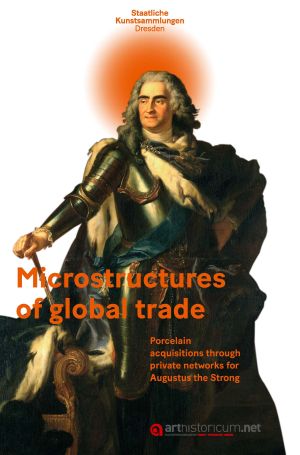
Zitationsvorschlag
Lizenz

Dieses Werk steht unter der Lizenz Creative Commons Namensnennung - Nicht-kommerziell - Keine Bearbeitungen 4.0 International.
Identifier
Veröffentlicht
Microstructures of global trade
Porcelain acquisitions through private trade networks for Augustus the Strong
Im Jahr 1716 entsandte der sächsisch-polnische Kurfürst-König August der Starke den Italiener Peter Robert Taparelli Graf von Lagnasco nach Den Haag, um vor Ort ostasiatisches Porzellan zu kaufen. Die Korrespondenz rund um dieses Unternehmen gibt detaillierte Einblicke in die Handelssituation in den Niederlanden. Die transkribierten Briefe erlauben Rückschlüsse auf die Verfügbarkeit asiatischer Waren, den Wettbewerb zwischen Käufern, Preise und Handelsnetzwerke, sowie die Objekte, die für den König erworben wurden. Die Publikation untersucht die Bedeutung privater Händler und ihre Rolle in der Versorgung des sächsischen Hofes mit ostasiatischen Luxusgütern.






